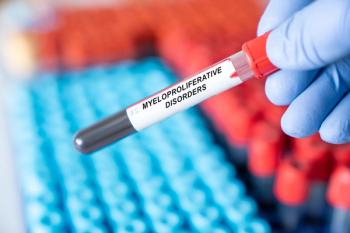
Global Gaps in Drug Access After FDA Approval: Insights From New Study and Ethics Guidelines
Lower-income countries rarely gain timely access to FDA-approved drugs tested in their populations, highlighting major global and ethical disparities.
Lower middle- and low-income countries are less likely to receive market authorization for drugs that were trialed within their state and
Medical research is only justified if it identifies and addresses the health needs of vulnerable populations and those populations stand to benefit from the resulting knowledge, practices, and interventions, according to the 2013 Declaration of Helsinki, which was readopted by the 75th World Medical Association General Assembly in 2024.1,2 Similarly, the Council for International Organizations of Medical Sciences (CIOMS) and the World Health Organization (WHO) explicitly state that sponsors must provide continuous access to interventions that have proven beneficial to the population where the trial was conducted.3 Yet, only 13% of medications assessed in this study were physically accessible among the lower- and middle-income countries (LMICs), and of the 3 tested in low-income countries, only 1 was available in all the tested countries.1
Defining Access to FDA-Approved Drugs
Physical access was defined as where a tested product received marketing authorization, meaning it is available to the population. However, market authorization and physical access do not guarantee affordability or adequate supplies and are therefore blanket terms connoting potentially broader patient access.1 Physical access was measured as the time to receipt of market authorization during the 5 years after FDA approval.
Access was also characterized geographically by categorizing countries by income group—high, upper middle, lower middle, and low—using the World Bank historical classifications of economies.
The study assessed 158 of the 172 FDA-approved medicines between 2015 and 2018, sponsored by 75 different sponsors, based on a total of 885 phase 2 and 3 trials. Of all the medications approved between 2015 and 2018, 39% target oncologic or hematologic indications, 14% target infectious diseases, and 13% target either autoimmune, musculoskeletal, or dermatologic indications. The 158 medicines included in the final analysis had publicly available information on trial site location and were tested in 89 countries.
Out of the 89 countries, 48 were high income, 23 were upper-middle income, 12 were lower-middle income, and 5 were low income. Yet, despite 144 of the 158 medicines being tested in the US and internationally, only 3 were tested in a low-income country. They were a 4-drug combination indicated for HIV tested in Uganda and Zimbabwe, a medicine targeting malaria tested in Ethiopia, and a medicine targeting onchocerciasis tested in Liberia. The majority of medications, aside from the US, hosting clinical trials were Germany, Spain, the UK, Canada, and France, with nearly 66% of medications tested in each.
Time to Market Authorization Varied Geographically and Regionally
Out of the 144 medicines tested outside of the US, only 10 received market authorization 1 year after FDA approval and rose to 34 at the 5-year time point after approval. Furthermore, of the 89 countries assessed in this study, only 77 had publicly available medicine authorization information. Among those 77, only 3 gained physical access to the medicine within a year of FDA approval, and 11 within 5 years.
There was a statistically significant difference in access by geographic region. Compared to those in Western Europe, in which 82% of medicines tested were made physically accessible within 5 years of FDA approval, only 28% of medicines tested in Africa were physically accessible.
Physical access also varied regionally; for example, market authorization of medicine ranged from 0% in Qatar to 100% in Saudi Arabia at the 5-year point. Similarly, market authorization ranged from 0% in Ghana, Liberia, and Zimbabwe to 100% in Ethiopia and Uganda.
“Higher mortality rates from infectious diseases in LMICs can be attributed in large part to poor access to available, cost-effective interventions to prevent and treat many infectious diseases,” the study authors wrote. “These findings highlight an underexamined dimension of research ethics and public health.”
Notably, researchers also called for further investigation into the declining access to FDA-approved medications in Asia and the Middle East. In 2015 and 2016, 19 of 40 medications were physically accessible in all tested countries; however, it declined to 15 of 50 from 2017 to 2018. Similarly, the Middle East had 14 of 27 medicines physically accessible in 2015 to 2016, vs 18 of 39 medicines in 2017 to 2018.
Public Health and Research Ethics Reform
The study was limited primarily by my market authorization, as it is not a determinant of actual patients’ access. Affordability, adequate supply, distribution systems, trained clinicians, and diagnostic infrastructure are important factors when assessing physical access, and data on such were not collected or evaluated in this study. Furthermore, delays in market authorizations could not be determined, nor could expanded access initiatives beyond the market authorization's impact on access.
“Addressing this issue is essential not only to uphold ethical standards in research but also for strengthening global health and reducing avoidable morbidity and mortality,” the study authors concluded.
References
1. Lee CJ, Gross CP, Miller JE. Physical accessibility of medicines in countries hosting trials for FDA approvals. JAMA Intern Med. Published online November 17, 2025. doi:10.1001/jamainternmed.2025.6060
2. WMA—The World Medical Association-WMA Declaration of Helsinki—ethical principles for medical research involving human participants. The World Medical Association. October 19, 2024. Accessed November 18, 2025.
3. Council for International Organizations of Medical Sciences (CIOMS). International ethical guidelines for health-related research involving humans. 4th ed. Geneva: CIOMS; 2016. Accessed November 18, 2025.
Newsletter
Stay ahead of policy, cost, and value—subscribe to AJMC for expert insights at the intersection of clinical care and health economics.













































